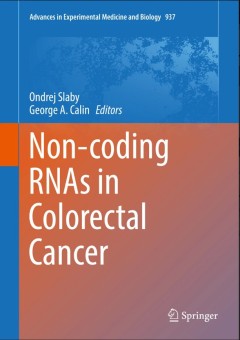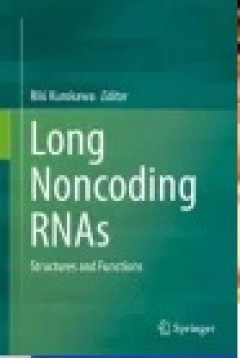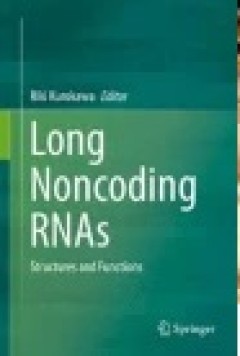Filter by

The Initiation of DNA Replication in Eukaryotes
Every time a cell divides, a copy of its genomic DNA has to be faithfully copied to generate new genomic DNA for the daughter cells. The process of DNA replication needs to be precisely regulated to ensure that replication of the genome is complete and accurate, but that re-replication does not occur. Errors in DNA replication can lead to genome instability and cancer. The process of repl…
- Edition
- 1
- ISBN/ISSN
- 978-3-319-24696-3
- Collation
- XII, 563, 3 b/w illustrations, 84 illustrations in colour
- Series Title
- The Initiation of DNA Replication in Eukaryotes
- Call Number
- -

The Genetics of Type 2 Diabetes and Related Traits
This book presents the state of the art of type 2 diabetes genetics, from the process of genetic discovery to its interpretation and clinical application, and illustrates a model for other complex human phenotypes. The first section explores genome-wide association studies, the extension of this method to less accessible phenotypes and the arrival of next-generation sequencing. A further secti…
- Edition
- 1
- ISBN/ISSN
- 978-3-319-01574-3
- Collation
- XI, 576, 40 b/w illustrations, 13 illustrations in colour
- Series Title
- The Genetics of Type 2 Diabetes and Related Traits
- Call Number
- -

Non-coding RNAs in Colorectal Cancer
This is the first book to provide a broad framework for obtaining an in depth understanding of the state-of-the-art knowledge on abnormalities of non-coding RNAs found to be associated with colorectal cancer pathogenesis. Readers will discover possible mechanisms underlying the substantial roles played by non-coding RNAs in molecular hallmarks of colorectal cancer.This work further provides the…
- Edition
- 1
- ISBN/ISSN
- 978-3-319-42057-8
- Collation
- VIII, 252
- Series Title
- Advances in Experimental Medicine and Biology
- Call Number
- -

The Neuropathology of Huntington’s Disease: Classical Findings, Recent Deve…
This monograph describes the progress in neuropathological HD research made during the last century, the neuropathological hallmarks of HD and their pathogenic relevance. Starting with the initial descriptions of the progressive degeneration of the striatum as one of the key events in HD, the worldwide practiced Vonsattel HD grading system of striatal neurodegeneration will be outlined. Correla…
- Edition
- -
- ISBN/ISSN
- 978-3-319-19285-7
- Collation
- XIV, 146
- Series Title
- Advances in Anatomy, Embryology and Cell Biology
- Call Number
- -

Long Noncoding RNAs: Structures and Functions
This book presents a common principle of actions of long noncoding RNAs (lncRNAs) from points of view at the atomic, molecular and cellular levels. At the atomic level, chemical studies of ribonucleic acids explain the chemical behavior of lncRNAs. Structural biological analysis of lncRNAs and its binding proteins also reveal the precise mechanisms of their actions. Molecular biological approac…
- Edition
- -
- ISBN/ISSN
- 978-4-431-55576-6
- Collation
- -
- Series Title
- -
- Call Number
- -

The Genetics of Type 2 Diabetes and Related Traits
The first section explores genome-wide association studies, the extension of this method to less accessible phenotypes and the arrival of next-generation sequencing. A further section goes beyond genetics to illustrate how other data sources can help interpret genetic data, such as leveraging population diversity, the correlation of genetic associations with physiological measurements, gene exp…
- Edition
- -
- ISBN/ISSN
- 978-3-319-01574-3
- Collation
- XI, 576
- Series Title
- -
- Call Number
- -

Long Noncoding RNAs: Structures and Functions
This book presents a common principle of actions of long noncoding RNAs (lncRNAs) from points of view at the atomic, molecular and cellular levels. At the atomic level, chemical studies of ribonucleic acids explain the chemical behavior of lncRNAs. Structural biological analysis of lncRNAs and its binding proteins also reveal the precise mechanisms of their actions. Molecular biological approac…
- Edition
- -
- ISBN/ISSN
- 978-4-431-55576-6
- Collation
- -
- Series Title
- -
- Call Number
- -
 Computer Science, Information & General Works
Computer Science, Information & General Works  Philosophy & Psychology
Philosophy & Psychology  Religion
Religion  Social Sciences
Social Sciences  Language
Language  Pure Science
Pure Science  Applied Sciences
Applied Sciences  Art & Recreation
Art & Recreation  Literature
Literature  History & Geography
History & Geography